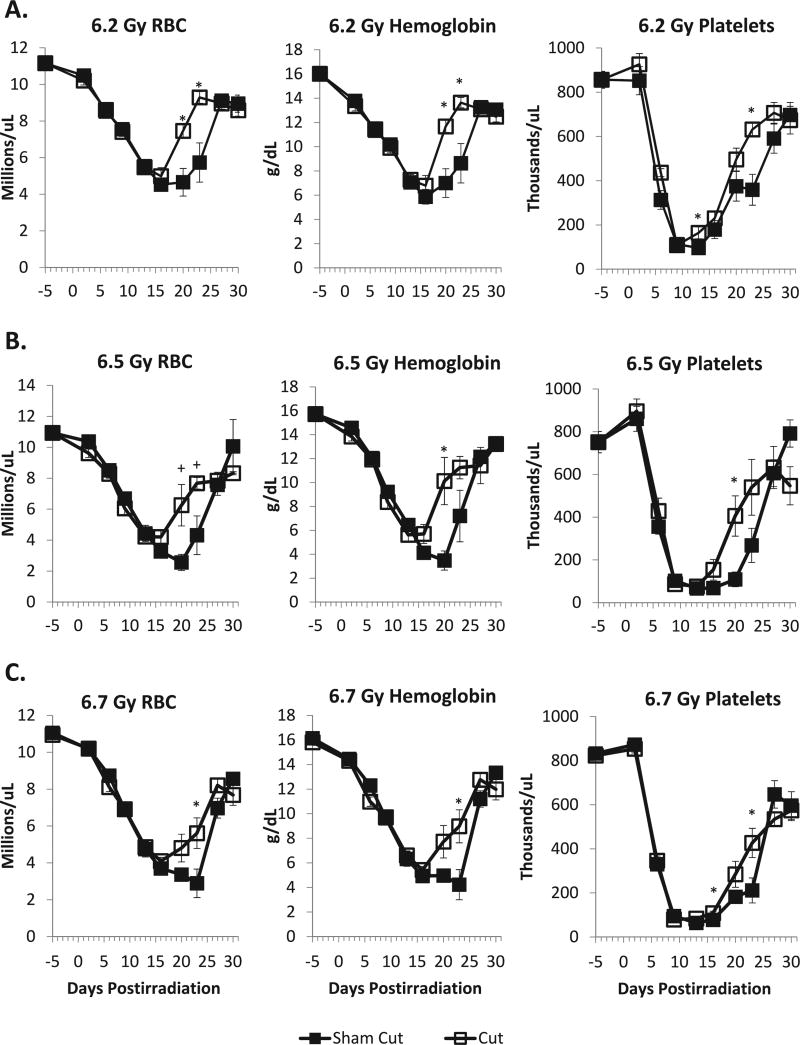FIG. 5.
Recovery of red blood cells (RBC), hemoglobin and platelets was enhanced in C57BL/6 female mice receiving a subcutaneous cut within 20 min after exposure to various doses of X rays (panel A = 6.2 Gy; panel B = 6.5 Gy; panel C = 6.7 Gy). Experiments were performed 2–4 times, with 2–3 mice bled per time point postirradiation, per experiment. Thus, from all experiments involved, each datum point represents 4–16 sham-cut or cut mice; baseline CBCs were obtained from both the sham-cut and cut mice, leading to n = 16, instead of n = 8. The 6.2 and 6.7 Gy cut data represent pooled data from mice that received 3 and 6 mm, or 3-, 6- and 12-mm incisions, respectively; we elected to pool these data since we had previously determined that length of the cut did not significantly alter 30-day all-cause mortality. Blood cell counts obtained during the recovery period (days 13–23), were analyzed by two-tail t tests and two-way ANOVA. Asteriks (*) indicate where P < 0.05 in the two-tail t test between the sham-cut and cut treatment group datum points. Plus signs (+) indicate where P < 0.07. Two-way ANOVA indicated P < 0.05 for treatment (sham cut vs. cut) for all three types of blood measurements, for all 3 radiation doses. Additionally, the interaction between time and treatment was significant (P < 0.05) for 6.2 and 6.5 Gy in RBC and hemoglobin, and for 6.7 Gy for all 3 types of blood measurements.

